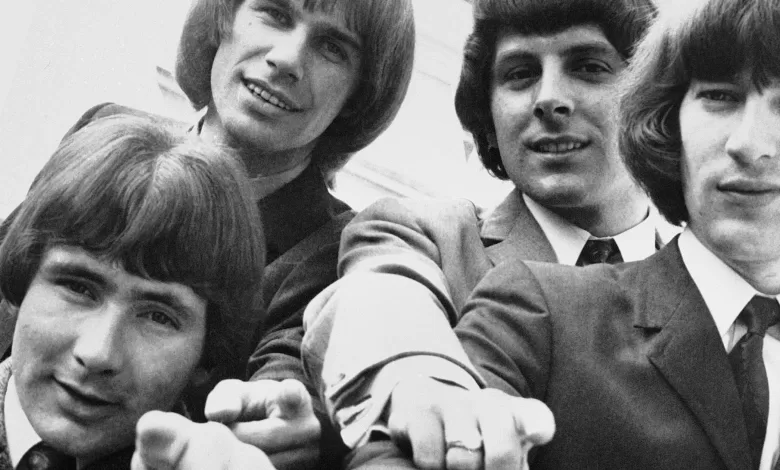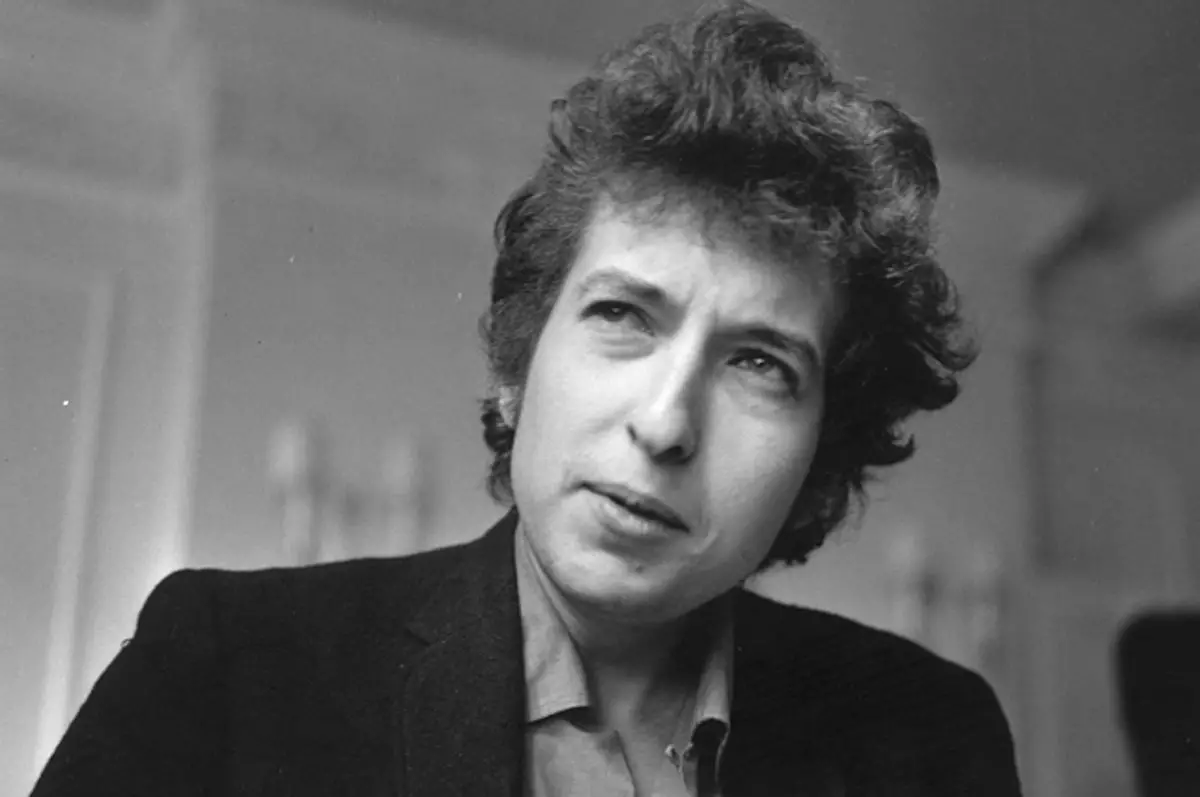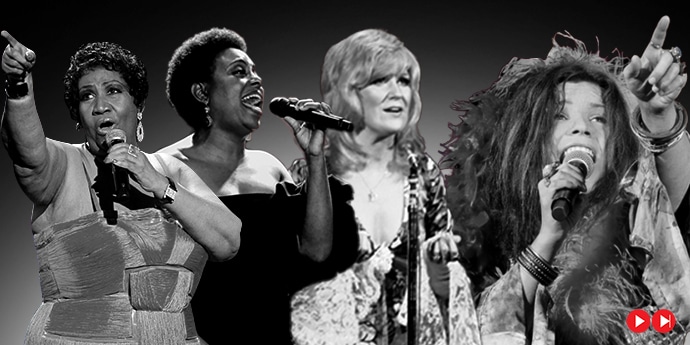The Rise of 1960s Rock and Roll Artists Exploring Their Influence and Legacy

The 1960s was a decade that saw immense social, political, and cultural changes across the world. This era also witnessed the rise of a new music genre that would revolutionize the music industry – rock and roll. The 1960s not only gave birth to some of the greatest rock and roll musicians of all time but also paved the way for future generations of artists. In this blog post, we will delve into the rise of 1960s rock and roll artists, their influential figures, iconic songs, and their lasting legacy.
Influential Figures in 1960s Rock and Roll
The 1960s saw the emergence of several influential rock and roll artists who set the tone for the decade. These individuals not only shaped the sound of 1960s rock and roll but also influenced future generations of musicians. Let’s take a look at some of the most notable figures:
The Beatles
No discussion about 1960s rock and roll is complete without mentioning the Beatles. This British band, consisting of John Lennon, Paul McCartney, George Harrison, and Ringo Starr, is widely regarded as one of the most influential bands of all time. Their music, which ranged from catchy pop tunes to experimental sounds, captured the hearts of millions and sparked a phenomenon known as “Beatlemania”. With hits like “Hey Jude”, “Let It Be”, and “Come Together”, the Beatles continue to inspire and influence rock and roll artists even today.
The Rolling Stones
Another British band that achieved massive success in the 1960s was the Rolling Stones. Comprised of Mick Jagger, Keith Richards, Brian Jones, Bill Wyman, and Charlie Watts, this band brought a rebellious edge to rock and roll with their gritty style and provocative lyrics. Known for hits such as “Satisfaction”, “Paint It Black”, and “Gimme Shelter”, the Rolling Stones continue to be a major influence in rock and roll, with their longevity and ability to adapt to changing music trends.
Bob Dylan
Bob Dylan, often referred to as the voice of a generation, was a key figure in the 1960s folk music revival. His poetic lyrics and distinctive voice made him a symbol of protest against social and political issues at the time. Songs like “Blowin’ in the Wind” and “The Times They Are a-Changin'” became anthems for the civil rights movement and anti-war protests. Dylan’s influence is evident in the music of artists like Bruce Springsteen and Neil Young, who have cited him as a major inspiration.
Revolutionizing the Music Industry: 1960s Rock and Roll Artists
The 1960s saw a significant shift in the music industry, thanks to the emergence of rock and roll. This new genre not only brought a fresh sound but also challenged traditional norms and paved the way for new ways of producing and distributing music.
The Concept Album
Rock and roll artists in the 1960s were not satisfied with just releasing singles; they wanted to create complete bodies of work that told a story or conveyed a message. This gave rise to the concept album – an album with a unifying theme or narrative. The Beatles’ “Sgt. Pepper’s Lonely Hearts Club Band” and Pink Floyd’s “The Dark Side of the Moon” are two iconic examples of concept albums from this era.
Experimentation with Sound
In the 1960s, advancements in technology allowed rock and roll artists to experiment with sound like never before. The use of distortion, feedback, and other effects became common, giving rock and roll a raw and edgy quality. Bands like the Jimi Hendrix Experience and Cream pushed the boundaries of what was considered acceptable in terms of sound, paving the way for future experimentation and innovation in rock music.
The Rise of Independent Labels
With the rise of rock and roll, independent labels gained popularity, challenging the dominance of major record companies. These labels were more open to taking risks and giving new artists a chance, leading to the discovery of some of the most influential and innovative musicians of the decade. This change in the industry also gave artists more creative control over their music, allowing them to experiment and push boundaries without commercial pressure.
Exploring the Sound of 1960s Rock and Roll
The sound of 1960s rock and roll is characterized by its raw energy, catchy melodies, and rebellious lyrics. However, this decade also saw the birth of sub-genres that added diversity and depth to the genre as a whole.
British Invasion
One of the defining sounds of 1960s rock and roll was the British invasion. With the success of bands like the Beatles and the Rolling Stones, British artists dominated the American music scene, bringing a fresh sound and image. The British invasion not only introduced new sounds but also inspired American artists to incorporate elements of this style into their music.
Folk Rock
Folk rock emerged as a popular sub-genre in the 1960s, combining elements of folk music with rock and roll. Artists like Bob Dylan, Simon Garfunkel, and the Byrds blended acoustic instruments with electric guitars, creating a unique sound that appealed to a wide audience. Folk rock was also known for its socially conscious lyrics, addressing issues such as war, civil rights, and the environment.
Psychedelic Rock
Psychedelic rock, also known as acid rock, was a sub-genre that pushed the boundaries of sound and experimentation even further. Artists like Jimi Hendrix, Pink Floyd, and Jefferson Airplane incorporated elements of psychedelia into their music, using hallucinogenic drugs and unconventional instruments to create a trippy and otherworldly sound. This sub-genre also influenced the visual aspects of rock concerts, with elaborate light shows and psychedelic visuals becoming a staple.
Breaking Barriers: Diversity in 1960s Rock and Roll
The 1960s was a time of immense social change, and this was reflected in the music of the era. While rock and roll had been dominated by white artists in its early years, the 1960s saw an increase in diversity and inclusivity, with artists from different backgrounds making their mark in the music industry.
Black Artists in Rock and Roll
In the 1960s, black artists finally received recognition in the world of rock and roll, which had long been considered a predominantly white genre. Chuck Berry, who had been making music since the 1950s, became one of the first black artists to achieve mainstream success in rock and roll. Other influential black artists of the decade include Little Richard, James Brown, and Tina Turner, who not only broke barriers but also inspired future generations of musicians.
Women in Rock and Roll
Women also made significant strides in rock and roll during the 1960s. While female singers like Connie Francis and Brenda Lee had achieved success in the 1950s, the 1960s saw women taking on more prominent roles in rock bands. Artists like Janis Joplin, Grace Slick, and Joan Baez paved the way for women in rock and roll and challenged traditional gender roles within the industry.
The Rise of Latin American Rock
The 1960s also saw the rise of Latin American rock, or “rock en español”. This sub-genre blended elements of traditional Latin American music with rock and roll, creating a unique and vibrant sound. Bands like Los Saicos from Peru and Los Bravos from Spain became popular not only in their home countries but also across Latin America and the United States.
Iconic Songs from 1960s Rock and Roll Artists
The 1960s produced countless iconic songs that have stood the test of time and continue to be celebrated today. These songs not only defined the decade but also influenced future generations of musicians.
“Like a Rolling Stone” by Bob Dylan
Released in 1965, “Like a Rolling Stone” is considered one of Bob Dylan’s most significant contributions to music. The song not only revolutionized the concept of what a single could be but also signaled a change in Dylan’s style, moving away from his folk roots and towards a more rock-oriented sound.
“A Day in the Life” by The Beatles
“A Day in the Life” is a prime example of the Beatles’ experimentation and innovation in the studio. Released in 1967, this epic track combined elements of psychedelia, classical music, and avant-garde techniques, creating a surreal and dreamlike experience for the listener.
“Purple Haze” by The Jimi Hendrix Experience
Considered one of the greatest guitarists of all time, Jimi Hendrix’s “Purple Haze” is a prime example of his unique style and sound. Released in 1967, this song showcased Hendrix’s use of distortion and effects, creating a psychedelic and mind-bending experience for the listener.
Behind the Scenes: The Lives of 1960s Rock and Roll Artists
While the 1960s saw the rise of some of the most influential and iconic musicians, it was also a tumultuous time for many artists behind the scenes. The pressures of fame, drug use, and clashes with record labels all took a toll on these rock and roll legends.
The Dark Side of Fame
The sudden fame and adoration that came with success in the music industry took a toll on many 1960s rock and roll artists. The constant attention and expectations from fans and the media often led to feelings of isolation and depression. The Beatles, who were at the height of their fame in the 1960s, famously struggled with the pressures of fame, leading to the band’s eventual breakup.
The Influence of Drugs
Drug use was prevalent among many 1960s rock and roll artists, especially those involved in the psychedelic sub-genre. While some artists like Jimi Hendrix and Janis Joplin tragically lost their lives due to drug overdose, others like the Rolling Stones’ Keith Richards managed to overcome addiction and continue to create music.
Battles Against Record Labels
Many 1960s rock and roll artists also faced battles with record labels that wanted to control their sound and image. The Beach Boys’ Brian Wilson famously had a conflict with his label over the release of the experimental album “Pet Sounds”, which is now considered a masterpiece. Bob Dylan also faced criticism from his label for moving away from his folk roots and experimenting with different sounds.
The Legacy of 1960s Rock and Roll Artists
The influence of 1960s rock and roll artists can still be felt today, more than half a century later. Their music, style, and attitude continue to inspire and influence future generations of musicians and shape the evolution of rock and roll as a genre.
Inspiring Future Generations
The music of 1960s rock and roll artists continues to inspire and influence new generations of musicians. Bands like Oasis and Arctic Monkeys have cited the Beatles as a major influence, while Bob Dylan’s poetic lyrics have inspired countless singer-songwriters. Even artists outside the rock genre, such as Beyoncé and Kendrick Lamar, have acknowledged the impact of 1960s rock and roll on their music.
Iconic Fashion and Style
The 1960s also saw a shift in fashion and style, with rock and roll artists setting the trends. From the Beatles’ famous “mop-top” haircuts to Jimi Hendrix’s flamboyant outfits, these artists not only defined their music but also their image. Styles like the mod look, flower power, and hippie fashion all became synonymous with the 1960s and continue to be celebrated and emulated today.
Changing the World Through Music
Perhaps the most significant legacy of 1960s rock and roll artists is their impact on society and culture. These musicians used their platform to speak out against social and political issues, challenging the status quo and paving the way for change. Their music became anthems for movements like civil rights, anti-war protests, and environmental activism, showing the power of music to unite people and spark meaningful conversations.
Challenging Social Norms: 1960s Rock and Roll Artists
Rock and roll has always been a genre that challenges traditional norms and pushes boundaries, and 1960s rock and roll artists were no exception. These musicians challenged societal expectations through their music, fashion, and lifestyles, paving the way for future generations to do the same.
Breaking Musical Barriers
In the 1960s, rock and roll broke barriers by incorporating different styles and sounds, creating a melting pot of musical influences. The British invasion brought a new sound to America, while folk rock blended genres like never before. This diversity in sound paved the way for artists from all backgrounds to make their mark in the music industry.
Embracing Individuality and Self-Expression
One of the defining characteristics of rock and roll is its emphasis on individuality and self-expression. 1960s rock and roll artists embodied this spirit through their music, fashion, and attitudes. They encouraged listeners to embrace their unique qualities and reject societal expectations of conformity.
Challenging Gender and Racial Norms
Rock and roll has always been a genre that has given a voice to marginalized communities, and 1960s artists were no exception. Women and people of color, who had previously been excluded from the music industry, found a platform in rock and roll to express themselves and challenge traditional gender and racial norms. This movement paved the way for more diversity and inclusivity in the industry.
The Evolution of Rock and Roll: 1960s Artists Leading the Way
The 1960s was a decade of immense change, and the music industry was no exception. The rise of 1960s rock and roll artists not only revolutionized the genre but also set the stage for future innovations and trends in music.
Influence on Subsequent Decades
The impact of 1960s rock and roll artists can be seen in subsequent decades of music. The experimentation and innovation of this era inspired new genres like punk, grunge, and alternative rock. Artists like Nirvana and Green Day cite bands like the Beatles and the Rolling Stones as major influences on their sound.
Setting the Standard for Live Performances
1960s rock and roll artists also set the standard for live performances, with their energetic and captivating stage presence. Bands like Led Zeppelin and Queen continued this tradition, putting on electrifying shows that captivated audiences. The concept of touring and performing live became an essential aspect of an artist’s career, thanks to the influence of 1960s rock and roll musicians.
The Impact on Music Production
The advancements in technology and experimentation with sound by 1960s rock and roll artists also had a lasting impact on music production. Techniques developed during this era, such as multi-track recording and overdubbing, continue to be used in music production today. The studio itself became an instrument, with producers like George Martin (known as the “Fifth Beatle”) adding new dimensions to songs through their production techniques.
Conclusion
The 1960s was a decade that saw immense social, political, and cultural changes across the world, and these changes were reflected in the music of the era. The rise of 1960s rock and roll artists not only revolutionized the genre but also had a lasting impact on the music industry as a whole.
Their influence can be seen in subsequent decades of music, from the sound and style to the way music is produced and performed. These artists challenged traditional norms and paved the way for future generations of musicians to express themselves freely and make their mark on the world through music.
he legacy of 1960s rock and roll artists continues to live on, inspiring and influencing new generations of musicians and shaping the evolution of rock and roll as a genre.
Blue Suede Shoes is a rock and roll standard by Elvis Presley in 1956





















